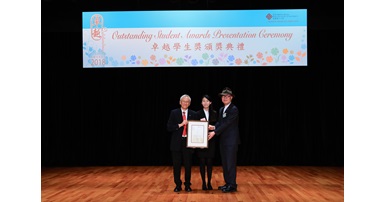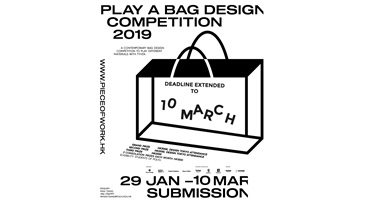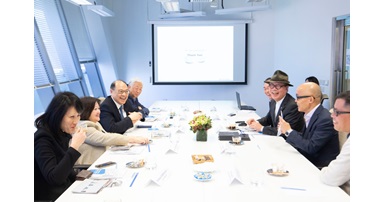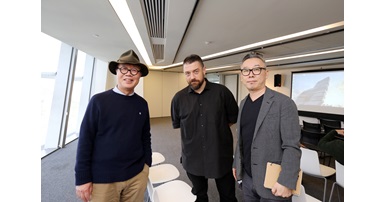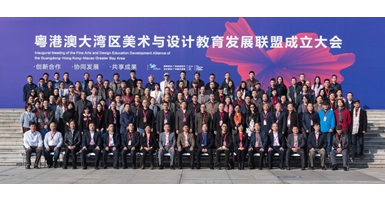CALL FOR PAPERS: CUBIC JOURNAL #4 Design Education
Call for Papers
Issue #4 Design Education
Technology’s Role in Reforming Design Education| Pedagogy - Critique - Transformation
Issue Editors: Jae-Eun Oh (POLYU), Sharon Poggenpohl (POLYU)
Can technologies transform and reform design education? Can online learning replace face-to-face tutorials across different design disciplines and their education processes? How can technological development today help studio-based learning take place in virtual space? Importantly, how should design educators adapt to the new (technological) direction this era is facing?
In studio-based learning, students undertake a long journey of idea generation, problem-solving, evaluating and refining their designs throughout the learning process (Oh 2018). Active communication between faculty members and students is imperative in this specific learning environment to help students remain motivated during the design cycle. Studios are critical in design education as they provide a simulation of industry practice (Brusaco et al. 2000). In this setting, teachers are the domain experts who guide and mentor students with their projects. Thus, studio-based learning is an essential teaching approach and a unique pedagogic method within design education, where face-to-face tutorials and peer learning happen continuously (Broadfoot & Bennett 2003). Interactivity in the studio can foster a proactive learning environment; students feel more involved in the project and more comfortable approaching educators, who give prompt feedback to their students in a designated physical space (Ma 2016).
Many design educators believe it would be too challenging to conduct studio-based learning using online tools and insist on a face-to-face format for their teaching and learning activities. It is time to consider the potential opportunities that online learning can provide. Technologies such as mobile devices and laptops enable both teachers and students to explore and use various online pedagogical tools. These technologies overcome barriers of distance and different locations to bring teachers and students together, helping to facilitate discussion and an exchange of ideas. Active communication occurs online as much as in the studio, even as dematerialization occurs with the shift from the strictly physical studio to the virtual space. To this effect, new forms of teaching and learning are able to occur anywhere.
With the swift development of technology, the outlook of education in the twenty-first century has transformed rapidly. Technologies such as smart devices and laptop computers support our daily communication in addition to enhancing teaching and learning methodologies. Advanced technologies help us to connect with each other through diverse platforms such as social media, learning management systems (LMS), massive open online courses (MOOC) and many others. Several higher institutions have begun to adopt the flipped classroom model, which is a form of blended learning that has become an essential learning approach for the future of education.
The millennial generation is comprised of digital natives that come to higher education with extensive knowledge of and experience with advanced technologies (Reinhardt et al. 2009). Universities now employ various teaching technologies to improve student motivation, engagement, involvement, and learning experiences, while encouraging students to use these technologies in traditional classroom settings. As a result, students have undoubtedly become more inquisitive about new technology and possess high expectations for an effective learning experience. Despite this, while a number of studies recommend applying appropriate technologies to teaching and learning in the traditional classroom environment, little attention has been given to the use of technology in design education.
We further ask, how has technology empowered us, and what has it taken away from us? What has it done to enhance our learning and teaching methodologies? How is technology used to guide students in their teaching and learning experience? How can we help students engage in meaningful learning? How has technology transformed our education scenes, and how might it affect our education scene in the future? How can design deal with the dematerialization of education? How does design education change in contextual settings? How can educators help students become more aware of these changes, specifically in design education? How do we educate our students with the mindset of transformation and reformation?
Issue 4 on Design Education seeks inspiring and thought-provoking contributions that may provide further insight into the questions raised as a response to uncovering the area / influences / consequences of technologies in design education. The call is open to contributions from a wide range of disciplines and fields related to education. This may include product design, spatial design, graphic design, game design, fashion design, communication design, advertising design, digital interactive design, film (live action and animation) media studies, architecture, design theory as well as art education and many other sectors. This issue, therefore, encourages contributions that reposition design education and design research, and that fills the evident gaps as well as generates other and new forms of knowledge that have been overlooked.
Contributions will be academically positioned papers up to 5,000 words that exemplify research-based exploration in the domain of design education. All contributions will be double blind peer reviewed.
Submissions are to follow submission criteria as described on the cubicjournal.org website. Final submissions must be made by 1st June 2019 at 12 noon, Hong Kong time to jae.oh@polyu.edu.hk and editors@cubicjournal.org
References:
Broadfoot, O., and Bennett, R. (2003). “Design studios online? Comparing traditional face-to-face design studio education with modern internet-based design studios.” In Apple University Consortium (online), 2003. http://auc.uow.edu.au/conf/conf03/papers/AUC_DV2003_Broadfoot.pdf
Brusaco, P. L., Caneparo, L., Carrara, G., Fioravanti, A., Novembri, G., & Zorgno, A. M. “Computer supported design studio.” Automation in Construction 9, (2000): 393-408.
Ma, H. “A study of blended learning strategies for project-based studies.” Asia Pacific Journal of Contemporary Education and Communication Technology 2, no. 1 (2016): 50-57.
Oh, J. (2018). “Educators and social media: Learning motivators in creative media courses.” Asia Pacific Journal of Contemporary Education and Communication Technology 4, no. 1 (2018): 130-138.
Reinhardt, W., Ebner, M., Beham, G & Costa, C. “How people are using Twitter during conferences.” In Creativity and Innovation Competencies on the Web: Proceedings of the Fifth Edumedia Conference, edited by Veronika Hornung-Prähauser and M. Luckmann, 145-156. Salzburg: Edumedi, 2009.
/////////////////////////////////////////
Cubic Journal
ISSN: 2589-7098 (Print)
ISSN: 2589-7107 (Online)
